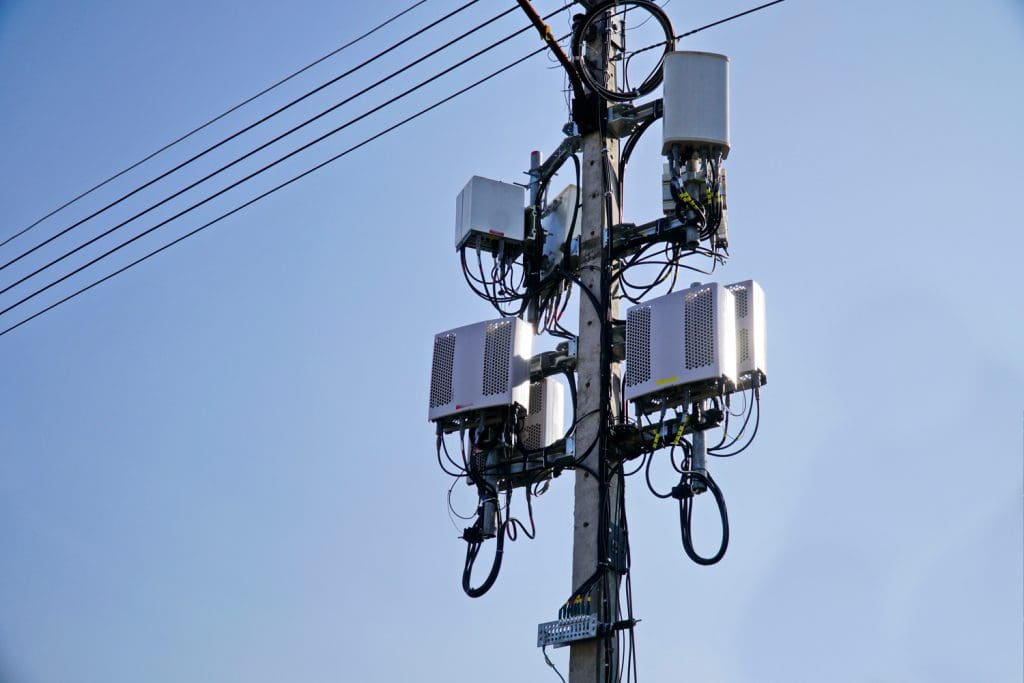
Duplication of active equipment. Credit – Small Cell Forum
“Pollution is not limited to the air we breathe and the water we drink; it can equally offend the eye and ear”.
The deployment of non-standalone 5G NR is rekindling age-old concerns about the impact of wireless network infrastructure on the environment around it. Policymakers have scrambled to keep pace and to tackle this issue of visual pollution, while also striving to maintain incentives for continued network investment.
All of this fluster stems from the step-change that 5G promises to deliver, which touches areas of performance, deployment and operation. The reality is that radical leaps in network performance cannot be achieved without equally radical changes to the way in which the network is built.
However, a paradoxical relationship exists between consumers and wireless networks. While there is a demand for progressive performance enhancement, there is also a parallel demand for minimal visual pollution. How can operators in the 5G era identify the equilibrium between these conflicting demands?
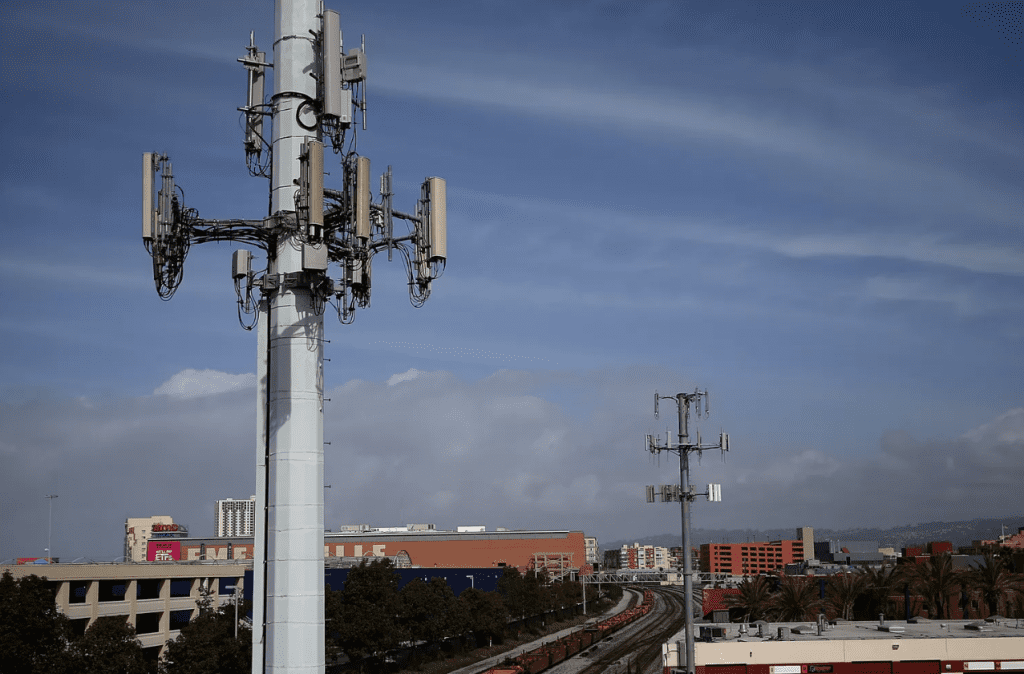
Traditional Macrocell. Credit – The Verge
Understanding the step-change in network design with 5G NR
In order to understand the link between visual pollution and wireless network infrastructure, it is imperative to first examine the physical changes introduced with 5G NR. Notably, the vast majority of these changes concern the new radio access network (RAN), which will remain tied to a 4G LTE anchor for some time (NSA).
This refreshed radio network can advance performance (and throughput, in particular) by leveraging spectrum resources across an unprecedented breadth of frequency bands. A combination of low, mid and high-band assets provide operators with the tools they need to deliver both wide-area and high capacity coverage.
The increased use of mid and high-band (or mmWave) assets is most important to consider in the context of evolving network design. These bands are being exploited because of the fact that they provide wider channel bandwidth for greater peak capacity. There is, however, a drawback.
The unfavourable characteristic of this higher frequency spectrum is that it suffers from a progressive degradation of signal quality with propagation. Known as attenuation, this phenomenon limits the coverage area that a single antenna can output, and thereby presents significant deployment and commercial challenges for operators as they move up the spectrum.
In short, a marked increase in the number of radio sites is required to provide the same level of coverage with mid and high-band spectrum as is offered by current networks. The so-called densification of the site grid forms a key component of modern network design, and it means getting as close to users as possible, even if they’re deep indoors.
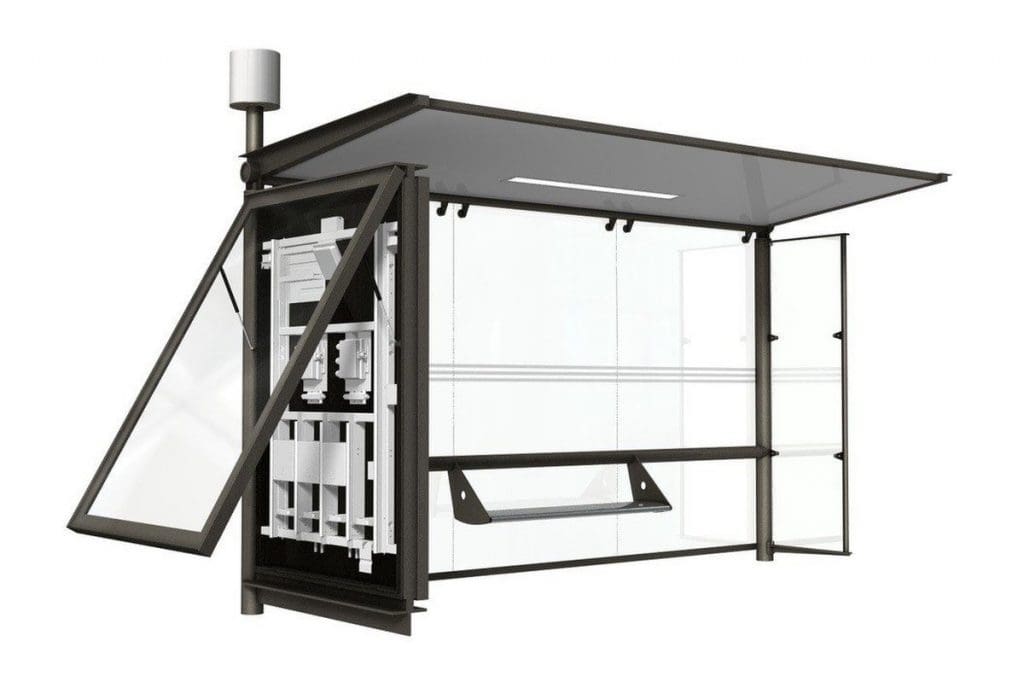
Small Cell in Street Furniture. Credit – JCDecaux

Traffic Light Small Cell. Credit – Rivard Report
Examining visual pollution in terms of macrosites, rooftop sites and small cells
The prospect of massive site grid densification is responsible for recent concerns regarding visual pollution. Operators will achieve this densification by deploying a combination of traditional multi-band macrosites, and for the first time, introducing scores of small cells in extremely close proximity to maximise capacity and improve signal quality.
Multi-band and multi-operator macrosites, as mentioned above, will continue to play a fundamental role in network design. This is acutely true in rural and sparsely populated regions, where the height of these lattice and monopole structures enables excellent signal propagation with low-band spectrum.
In urban regions, meanwhile, a dramatic increase in the number of large macrosites is not anticipated because of the prohibitive cost of deployment and planning restrictions. It is widely recognised that these sites are major sources of visual pollution given their obstructive and unappealing nature.
Rooftop sites are similar in their function to macrosites, but crucially, they are often more inconspicuous and confined to the densest of areas within an urban setting. Unlike macrosites, the density of rooftop sites is likely to grow significantly with mid and high-band spectrum, aided by the proliferation of deeper in-building fibre.
The visual advantage of these rooftop sites compared with macrosites is that only active equipment (such as the antenna) is usually visible from street level. This enables them to conform to the urban skyline more easily, and reduces the severity of reductions in land valuation.
Small cells, which vary in use case scenario based on specifications such as output power, are inherently less visually polluting thanks to their smaller form factor. They can be disguised more easily and will be deployed on street furniture such as lighting and bus shelters, as well as being cable or strand-mounted.
Notably, the progressive use of higher frequency spectrum in mid and high-bands will permit the miniaturisation of small cell antennas.
Of course, however, the process of accessing publicly-owned street furniture to deploy privately-owned wireless network infrastructure is a minefield. Local authorities will be keen to minimise the duplication of small cells where possible and to also monetise their assets by charging a recurring fee for access.
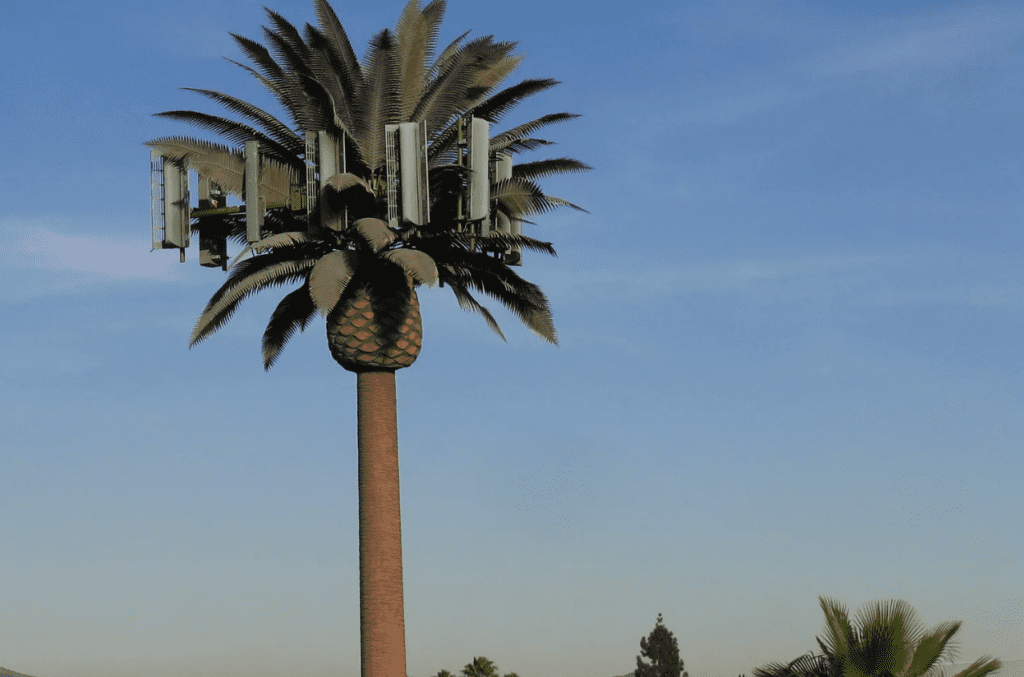
Tree Disguised Antenna. Credit – Vox
Exploring solutions to minimise visual pollution in the 5G era
Solutions such as neutral host and increased sharing of active equipment across multiple operators will be important in the pursuit of minimal visual pollution. Together, they potentially enable more evenly distributed and cost-effective network performance improvements by pooling resources such as backhaul (in the form of fibre) and power.
Further implementation of traditional concealment solutions is also to be anticipated, with the goal of making equipment such as antennas indistinguishable from the environments in which they are deployed. Stealth concealment solutions, while expensive, can be designed to cater for everything from trees to churches and water tanks.
Alternatively, operators can employ something as simple as paint if they can swallow the long-term maintenance costs. Printed and reflective films are also now being used to create an effective “camouflage” for antennas on buildings.
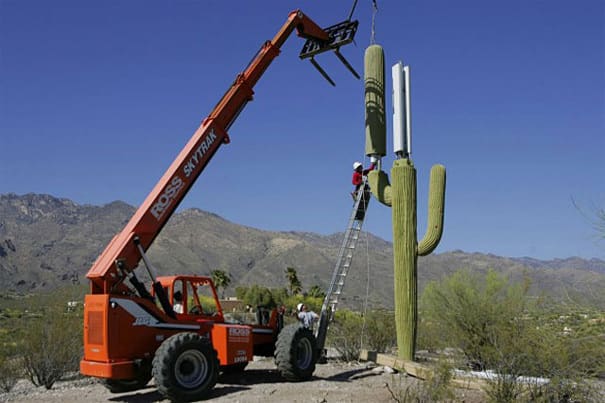
Cactus Camouflage. Credit – Bored Panda
Conclusion: Collaboration is key in the quest to minimise visual pollution with 5G NR
Concealment solutions such as those highlighted above are only viable if there is a consensus among all of the relevant stakeholders regarding what is and what isn’t appropriate for deployment. The social and economic value provided by the existence of infrastructure such as small cells needs to be assessed alongside visual pollution.
Massive densification of the site grid presents an unprecedented challenge for operators, even if it is also an opportunity to deliver exceptional leaps in performance. In order to achieve it, they will need to deploy infrastructure in new places, and that means traversing the depths of large buildings and accessing street furniture.
